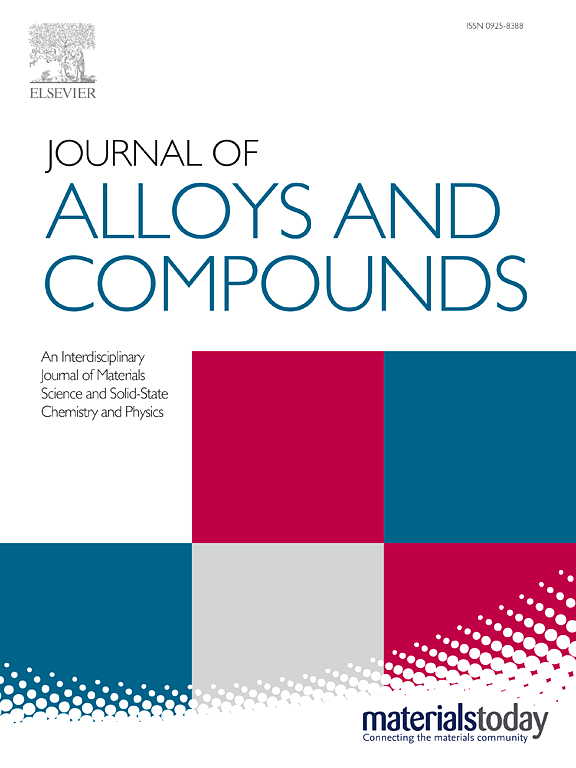A comparative study on sintering behavior and microstructure of copper-cobalt-alloy using conventional sintering and FAST
IF 5.8
2区 材料科学
Q2 CHEMISTRY, PHYSICAL
引用次数: 0
Abstract
In this study, Copper-Cobalt-based granulated and non-granulated powders were investigated using Field-Assisted Sintering Technology (FAST) and conventional sintering. Phase composition analysis via Rietveld refinement of X-Ray Diffraction data demonstrated that the sintering method critically influenced the microstructural evolution. Conventional sintering of one of the investigated compositions (BOND1H) led to the formation of the FeCo intermetallic due to a prolonged exposure to high temperatures. On the other hand, FAST processing preserved discrete iron and cobalt phases. The FAST process exhibited superior efficacy for non-granulated powders, achieving 91.4 % theoretical density in one of the samples (BOND2R) with minimal defects, compared to granulated systems where binder decomposition induced porosity. Remarkably, FAST-processed BOND2R composition attained hardness values (245 ± 32 HRB) equivalent to the conventional counterparts (240 ± 10 HRB) despite differences in densification. These results underscore the dual influence of sintering strategy and powder morphology on microstructural control, defect formation, and mechanical performance in Copper-Cobalt-based systems.
常规烧结与FAST烧结对铜钴合金烧结性能和显微组织的比较研究
本研究采用场辅助烧结技术(FAST)和常规烧结技术对铜钴基颗粒状和非颗粒状粉末进行了研究。通过对x射线衍射数据进行Rietveld细化的相组成分析表明,烧结方法对微观组织的演变有重要影响。其中一种研究成分(BOND1H)的常规烧结由于长时间暴露在高温下导致了FeCo金属间化合物的形成。另一方面,FAST处理保留了离散的铁和钴相。FAST工艺在非粒状粉末中表现出优异的效果,在其中一个样品(BOND2R)中达到91.4%的理论密度,缺陷最小,与粒状系统相比,粘合剂分解导致孔隙率。值得注意的是,尽管致密性不同,但快速加工的BOND2R成分的硬度值(245±32 HRB)与常规成分(240±10 HRB)相当。这些结果强调了烧结策略和粉末形貌对铜钴基体系的微观结构控制、缺陷形成和力学性能的双重影响。
本文章由计算机程序翻译,如有差异,请以英文原文为准。
求助全文
约1分钟内获得全文
求助全文
来源期刊

Journal of Alloys and Compounds
工程技术-材料科学:综合
CiteScore
11.10
自引率
14.50%
发文量
5146
审稿时长
67 days
期刊介绍:
The Journal of Alloys and Compounds is intended to serve as an international medium for the publication of work on solid materials comprising compounds as well as alloys. Its great strength lies in the diversity of discipline which it encompasses, drawing together results from materials science, solid-state chemistry and physics.
 求助内容:
求助内容: 应助结果提醒方式:
应助结果提醒方式:


